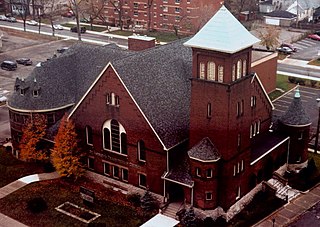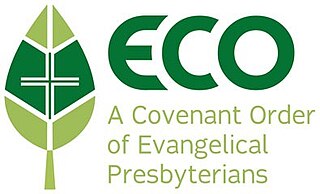Background
In the early 19th century, Sandy Springs residents, mainly Scotch-Irish pioneers, periodically gathered for a camp meeting at a spring located nearby; but for regular weekly worship, they traveled to Anderson's Presbyterian Church. In 1832, a request was made and granted to establish a local Presbyterian church, to be known as Sandy Spring Presbyterian Church. The church building, a frame structure, was erected at Mt. Zion's present site on land donated by Mr. Archibald McElroy. In 1842, the Presbytery changed the name to Mount Zion Presbyterian Church.
Church records indicate that in 1834 the church had 40 members.
During the Civil War years from 1861–1863, no records were kept, and some of the early records of the church were destroyed by fire. There were also years when the church was vacant (meaning that no minister served it in any capacity). In spite of this, the Sunday School was maintained.
There are two known Civil War graves in the church cemetery. James Waddell Hillhouse (20 April 1822 - 22 July 1861), son of the Rev. Joseph Hillhouse, and Michael Alexander Bellotte (1 January 1830 - 24 July 1861), son of Jacob Bellotte, an elder in Mt. Zion's first session, died from injuries in the first Battle of Manassas. They served together in the 4th SC Regiment, and died from the accidental discharge of a shell.
Change Of Location
Hoping to increase the membership, the congregation of Mt. Zion voted in 1867 to move to a site near the railroad and about one half mile east of the original location. Later, on August 26, 1876, the building was sold, and the members decided to hold services at the old Grange Hall about three miles southwest of the Sandy Springs crossroads.
In 1882, under the leadership of Dr. J. B. Adger and his son, Mr. John Adger, a drive was started to raise funds to construct a new church building. Mr. John Adger was instrumental in beginning the movement when he was successful in collecting $250.00, the first money contributed to the building of the present Mt. Zion Church. In 1884 a Building Committee was formed which consisted of the following men: T. R. Simpson, W. J. Erwin, Alfred Benjamin Bowden, James Dickson McElroy and T. E. Dickson. When the church was completed, the total cost in cash was $800.00.
As was the custom in Presbyterian polity toward the end of the 19th century and the early 20th century, the church did not hesitate to call before the Session any member who was guilty of breaking a commandment. The accused party was given a chance to confess and ask forgiveness for his or her sin. After due consideration by the Session, a decision was made whether a suspension or vindication was in order. Records show that most parties confessed, asked forgiveness, and were vindicated.
Major Times
The United States entered World War I on 6 April 1917. President Woodrow Wilson had worked hard for the nation's peace but to no avail. It was his hope that the involvement of the United States might help to "make the world safe for democracy." At this time the people of Mt. Zion displayed a high plane of patriotic sentiment. Young men volunteered for or were drafted into the armed forces. The women rolled bandages, made hospital garments, and took cookies, cakes, and sandwiches to soldiers who came through Sandy Springs on troop trains.
When the Great Depression hit America. Banks closed, businesses failed, people were without jobs. The churches, as well as individuals, were affected keenly by this period of disaster and despair. "The Lord's acre" was encouraged by Mt. Zion. The farmer set aside a good acre of land, planted a crop on it, gave it special attention, sold the crop, and then gave all proceeds to the church. Times were hard and money scarce so this project was most beneficial to the financial status of the church.
Expansion
It was not until 1950 that plans for the Educational Building were drawn. Realization of the dream of expanded facilities came slowly. Construction was done on a time and materials basis as funds became available. Some labor was hired and the congregation donated some. The building of concrete blocks and brick veneer, which cost $8,000, is 54 feet long and 30 feet wide. It contains an assembly room, complete with cheerful fireplace, a kitchen, four Sunday school rooms and two rest rooms.
Although the Educational Building had been completed nearly two years previously, it was not until August 4, 1957, that it was officially dedicated during a Homecoming commemorating the 125th anniversary of the founding of the church.
In 1996, the church leased church property for a county park. The land was cleared, and a pavilion, playground, and walking track were built and are still enjoyed by the community today.
Mt. Zion continues to be an active congregation and an active part of the Sandy Springs Community.

The Presbyterian Church (USA), abbreviated PC (USA), is a mainline Protestant denomination in the United States. It is the largest Presbyterian denomination in the country. The Presbyterian Church (USA) was established with the 1983 merger of the Presbyterian Church in the United States, whose churches were located in the Southern and border states, with the United Presbyterian Church in the United States of America, whose congregations could be found in every state.
Presbyterianpolity is a method of church governance typified by the rule of assemblies of presbyters, or elders. Each local church is governed by a body of elected elders usually called the session or consistory, though other terms, such as church board, may apply. Groups of local churches are governed by a higher assembly of elders known as the presbytery or classis; presbyteries can be grouped into a synod, and presbyteries and synods nationwide often join together in a general assembly. Responsibility for conduct of church services is reserved to an ordained minister or pastor known as a teaching elder, or a minister of the word and sacrament.

The Cumberland Presbyterian Church is a Presbyterian denomination spawned by the Second Great Awakening. In 2019, it had 65,087 members and 673 congregations, of which 51 were located outside of the United States. The word Cumberland comes from the Cumberland River valley where the church was founded.

The Presbyterian Church in Canada is a Presbyterian denomination, serving in Canada under this name since 1875. The United Church of Canada claimed the right to the name from 1925 to 1939. According to the Canada 2001 Census 409,830 Canadians identify themselves as Presbyterian, that is, 1.4 percent of the population.

The Presbyterian Church in the United States of America (PCUSA) was a Presbyterian denomination existing from 1789 to 1958. In that year, the PCUSA merged with the United Presbyterian Church of North America. The new church was named the United Presbyterian Church in the United States of America. It was a predecessor to the contemporary Presbyterian Church (USA).

St. Andrew's Presbyterian Church, is a Presbyterian Church in Canada congregation in downtown Windsor, Ontario, Canada. The congregation dates back to 1857, and at one time, was the largest congregation by membership within the Presbyterian Church in Canada (PCC).
The Synod of Otago and Southland is a synod of the Presbyterian Church of Aotearoa New Zealand (PCANZ). Originally independent, the Synod merged with the northern Presbyterian church in 1901 to form the Presbyterian Church of Aotearoa New Zealand.
The Cumberland Presbyterian Church in America is a historically African-American denomination which developed from the Cumberland Presbyterian Church in 1874.

Presbyterian Church of East Africa (PCEA) is a Presbyterian denomination headquartered in Nairobi, Kenya. In Kenya, 10% of the population is Presbyterian. It was started by missionaries from Scotland, most notable of whom was Dr John Arthur. It has its headquarters in Nairobi South C.
Washington Presbytery, of the Presbyterian Church (USA) is the association of PCUSA churches in Washington and Greene counties in Pennsylvania.

The Indonesian Christian Church is an Indonesian church of Presbyterian denomination. It adheres to Calvinist theology.

Old Brick Church, which is also known as Ebenezer Associate Reformed Presbyterian (ARP) Church or First Associate Reformed Presbyterian Church is a church built in 1788 about 4 mi (6 km) north of Jenkinsville on SC 213 in Fairfield County, South Carolina. It was named to the National Register of Historic Places on August 19, 1971. It is one of the few 18th-century churches surviving in the South Carolina midlands.

The Reformed Presbyterian Church of North America (RPCNA) is a Presbyterian church with congregations and missions throughout the United States, Canada, Japan, and Chile. Its beliefs—held in common with other members of the Reformed Presbyterian Global Alliance—place it in the conservative wing of the Reformed family of Protestant churches. Below the Bible—which is held as divinely inspired and without error—the church is committed to several "subordinate standards," together considered with its constitution: the Westminster Confession of Faith and Larger and Shorter Catechisms, along with its Testimony, Directory for Church Government, the Book of Discipline, and Directory for Worship.
Mount Auburn Presbyterian Church is a congregation of the Presbyterian Church (USA) located in Cincinnati, Ohio. Its pastor is the Rev. Stacey Midge, who holds a Masters of Divinity from Western Theological Seminary, 2003.

Church of the Covenant is a Presbyterian Church located in Washington, Pennsylvania. It operates under the Presbyterian Church U.S.A. denomination under the Synod of the Trinity and the Presbytery of Washington. The church has historically maintained a strong relationship with the neighboring Washington & Jefferson College. The church was founded through the 1960 merger of the Second Presbyterian Church, which was itself a daughter work of the First Presbyterian Church 1793, and the Third Presbyterian Church.
Robert Adam Holliday Lusk was a Reformed Presbyterian or Covenanter minister of the strictest sort, in a century which, according to Presbyterian historian Robert E. Thompson, was marked by increasing relaxation into less stringent manifestations of doctrine and practice amongst all branches of Presbyterianism. His career crossed paths with many prominent ministers and he was involved in numerous ecclesiastical courts at pivotal moments in the history of the Reformed Presbyterian Church. Amongst Reformed Presbyterians, he was an "Old Light," and amongst "Old Lights," he would lay claim to be an "Original Covenanter." He was descended from a long line of Scotch-Irish, and the Lusks had fled from Scotland to Ireland, escaping religious persecution; many of them settled in America prior to the American Revolutionary War.

ECO: A Covenant Order of Evangelical Presbyterians is an evangelical Presbyterian denomination in the United States. As a Presbyterian church, ECO adheres to Reformed theology and Presbyterian polity. It was established in 2012 by former congregations and members of the Presbyterian Church (USA), abbreviated PC(USA). Denominational disputes over theology—particularly ordination of practicing homosexuals as pastors and gay marriage—and bureaucracy led to the founding of ECO. In 2018, ECO has over 383 congregations, 103,425 covenant partners and over 500 pastors. ECO churches are egalitarian in beliefs and ordain women as pastors and elders.

The National Presbyterian Church in Mexico is the second-largest Protestant church, and the largest Reformed denomination in Mexico. It is present throughout the country, and is particularly strong in the states of Tabasco, Chiapas, Campeche, Yucatan, Nuevo León, Aguascalientes and Mexico City.

Presbyterianism has had a presence in the United States since colonial times and has exerted an important influence over broader American religion and culture.

The Unitarian Church in Ireland presently consists of two Congregations, Dublin and Cork, part of the Synod of Munster, in the Republic of Ireland, which has itself been part the Non-Subscribing Presbyterian Church of Ireland since 1935. Some congregations remain closely associated with the General Assembly of Unitarian and Free Christian Churches. These churches would abide by the traditional Unitarian principles of Freedom, Reason and Tolerance.













